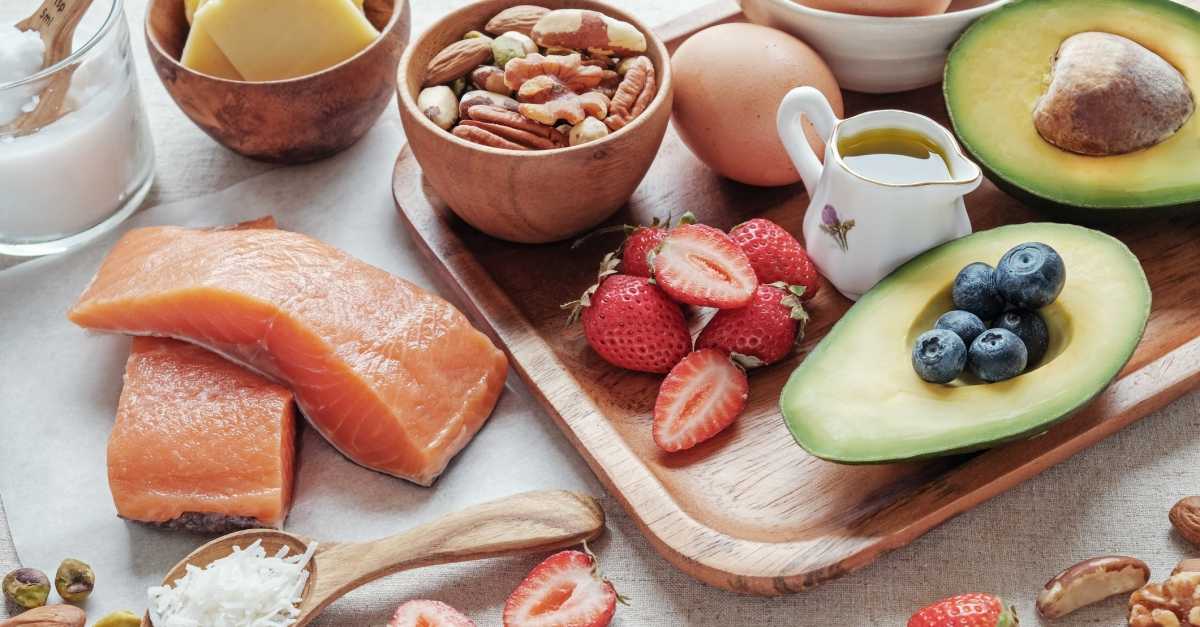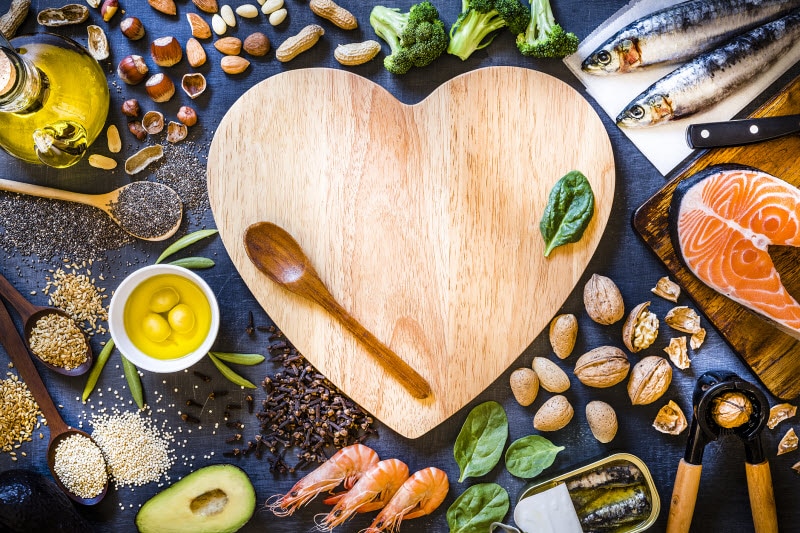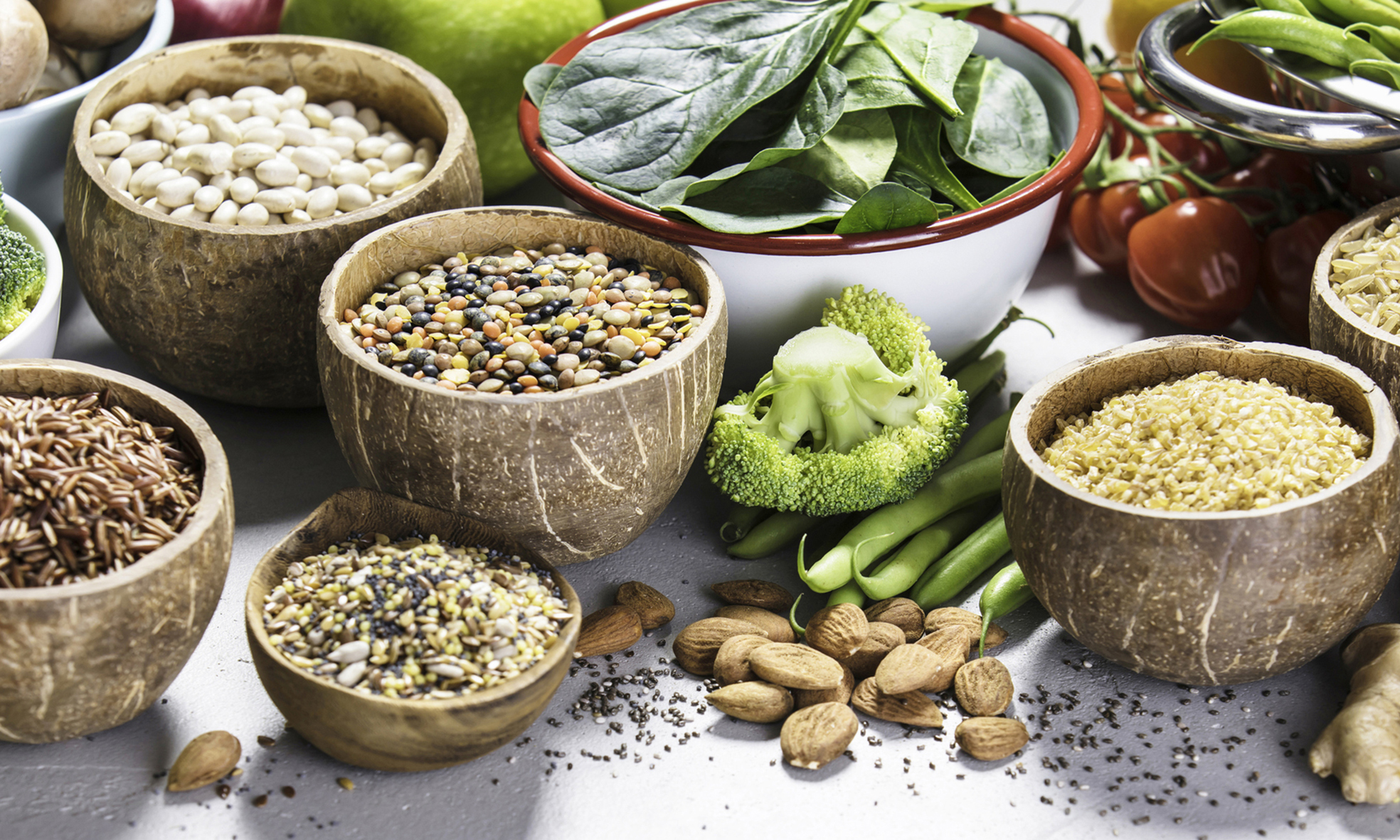7-Day Low-Saturated-Fat Meal Plan for High Blood Pressure

According to the National Heart, Lung and Blood Institute, about half of all Americans have high blood pressure. Dubbed the ominous “silent killer” due to its lack of symptoms, many people are unaware they fit the diagnosis. Chronically high blood pressure can have serious health implications for your body by damaging arteries, leading to issues with your eyes, kidneys, brain and heart, such as heart disease and stroke. Risk factors for developing high blood pressure include lifestyle habits, like an unhealthy diet and lack of exercise, as well as age, family history, race and genetics, per the NHLBI. Because it’s often symptomless, the NHLBI recommends everyone get their blood pressure checked by a qualified medical provider at least once a year.
This weekly meal plan aims to tackle the nutrition component of high blood pressure management. To support heart health and improve blood pressure, we cap the sodium at no more than 1,500 milligrams per day, per the American Heart Association’s recommendations, reduce saturated fat while increasing unsaturated fats, and include plenty of fiber-rich foods as well as heart-healthy fruits and veggies. If you don’t currently have high blood pressure, this plan also works great for prevention and overall health. Because weight loss can play a role in lowering blood pressure, we set this plan at 1,500 calories a day, which is a level where many people will lose weight. For those with other calorie needs, we included modifications for 1,200 and 2,000 calories per day.
Strategies to Improve Heart Health
Eat More Fiber
Fiber is the unassuming MVP of the nutrition world. Upping our fiber intake has many health benefits, including supporting heart health, aiding weight loss and reducing the risk of developing type 2 diabetes. This plan includes at least 30 grams of fiber each day.
Pump Up Potassium
Though sodium gets a lot of attention when talking about healthy blood pressure diets, eating more potassium plays a pivotal role in keeping our tickers healthy and preventing heart disease.
Watch Sodium Intake
Many people eat way more sodium than they realize. The AHA recommends a maximum of 2,300 mg of sodium daily, but ideally 1,500 mg for most adults. To cut back on sodium, you’ll have the most significant impact by limiting processed foods and cooking more meals at home. Adding a little salt to homemade foods is less of a concern, as processed foods are one of the biggest sources of sodium.
Exercise
It’s no surprise that exercise plays a pivotal role in keeping your heart healthy. Increased activity is even linked to improved stats for those with the most stubborn blood pressure and resistant hypertension. Whether you prefer walking, biking, running, dancing, hiking, strength training or a different form of activity, increased movement is key.
Diversify Your Fats
In the past, it was thought that saturated fat was the culprit of heart disease. Yet, research has shown that it’s not that saturated fat is bad, but rather that most people consume too much of it. Saturated fat, found in animal products and tropical oils such as coconut, can be enjoyed in moderation. And unsaturated fats like those found in fatty fish, olive oil, nuts and seeds should be consumed more frequently. Restoring the balance by upping our unsaturated fat intake, plus eating plenty of other nutritious foods, like legumes, fruits and vegetables, is an important strategy for improved heart health.
Heart-Healthy Foods to Focus On

- Vegetables, especially dark leafy greens, potato and sweet potatoes, beets, tomatoes and squash and cruciferous veggies, like broccoli, cauliflower, cabbage and Brussels sprouts
- Fruit like berries, citrus fruits, bananas, apples, pears, plums, pomegranates, cherries, grapes
- Legumes (beans and lentils, edamame)
- Nuts, including natural nut butters without added sugars
- Seeds like chia, flaxseed, pumpkin seeds and sunflower seeds
- Whole grains such as bulgur, quinoa, brown rice, whole wheat, oats and freekeh
- Fish, especially those high in omega-3s like salmon, sardines and mackerel
- Dairy, especially fermented dairy like yogurt and kefir
- Olive oil, avocado oil and avocado
Meal Preparation Tips

To make your week of meals more manageable:
- Make High-Fiber Raspberry-Vanilla Overnight Oats to have for breakfast on Days 2 through 5.
- Prepare Slow-Cooker Chicken Chili to have for lunch on days 2 through 5.
- Make Blueberry-Lemon Energy Balls to have as snacks throughout the week.
The 7-Day Meal Plan
Day 1
Breakfast (352 calories)
- 1 serving Peanut Butter Chia Berry Jam English Muffin
- 1 cup nonfat plain kefir
A.M. Snack (37 calories)
- 1 medium bell pepper, sliced
Lunch (472 calories)
- 1 serving Stuffed Sweet Potato with Hummus Dressing
P.M. Snack (197 calories)
- 1⁄4 cup unsalted dry-roasted cashews
Dinner (460 calories)
- 1 serving 30-Minute Roasted Salmon Tacos with Corn Pepper Salsa
Daily Totals: 1,517 calories, 48g fat, 8g saturated fat, 83g protein, 208g carbohydrate, 44g fiber, 1,199mg sodium
1,200 calories: Omit kefir at breakfast, change lunch to 1 serving White Bean Veggie Salad and change P.M. snack to 1 medium apple.
2,000 calories: Add 1/4 cup hummus and 1 cup edamame in pods to A.M. snack and add 1 serving Cucumber, Tomato Avocado Salad to dinner.
Day 2
Breakfast (357 calories)
- 1 serving High-Fiber Raspberry-Vanilla Overnight Oats
- 3 Tbsp. sliced almonds (to sprinkle on the overnight oats)
A.M. Snack (104 calories)
- 1⁄2 cup low-fat plain Greek yogurt
- 1⁄4 cup blueberries
Lunch (447 calories)
- 1 serving Slow-Cooker Chicken Chili
- 1 medium banana
P.M. Snack (125 calories)
- 2 Blueberry-Lemon Energy Balls
Dinner (488 calories)
- 1 serving Best Vegan Burgers
- 1 serving Spicy Cabbage Slaw
Daily Totals: 1,522 calories, 57g fat, 11g saturated fat, 71g protein, 193g carbohydrate, 43g fiber, 1,413mg sodium
1,200 calories: Omit almonds at breakfast and banana at lunch, plus change P.M. snack to 1/2 cup blackberries.
2,000 calories: Add 1/4 cup unsalted dry-roasted almonds to A.M. snack, 2 Tbsp. natural peanut butter to the banana at lunch, and 1 medium peach to P.M. snack.
Day 3
Breakfast (357 calories)
- 1 serving High-Fiber Raspberry-Vanilla Overnight Oats
- 3 Tbsp. sliced almonds (to sprinkle on the overnight oats)
A.M. Snack (125 calories)
- 2 Blueberry-Lemon Energy Balls
Lunch (447 calories)
- 1 serving Slow-Cooker Chicken Chili
- 1 medium banana
P.M. Snack (59 calories)
- 1 medium peach
Dinner (505 calories)
- 1 serving Sheet-Pan Shrimp, Pineapple Peppers with Rice
Daily Totals: 1,493 calories, 47g fat, 7g saturated fat, 72g protein, 207g carbohydrate, 32g fiber, 1,250mg sodium
1,200 calories: Omit almonds at breakfast, reduce to 1 energy ball at A.M. snack and omit banana at lunch.
2,000 calories: Add 1 plum and increase to 3 energy balls at A.M. snack, add 2 Tbsp. natural peanut butter to lunch, and add 1/4 cup unsalted dry-roasted almonds to P.M. snack.
Day 4
Breakfast (357 calories)
- 1 serving High-Fiber Raspberry-Vanilla Overnight Oats
- 3 Tbsp. sliced almonds (to sprinkle on the overnight oats)
A.M. Snack (104 calories)
- 1⁄2 cup low-fat plain Greek yogurt
- 1⁄4 cup blueberries
Lunch (447 calories)
- 1 serving Slow-Cooker Chicken Chili
- 1 medium banana
P.M. Snack (190 calories)
- 3 Blueberry-Lemon Energy Balls
Dinner (403 calories)
- 1 serving One-Pot Lentils with Rice Spinach
Daily Totals: 1,501 calories, 50g fat, 10g saturated fat, 73g protein, 203g carbohydrate, 45g fiber, 1,281mg sodium
1,200 calories: Omit almonds at breakfast and banana at lunch, plus change P.M. snack to 1 medium apple.
2,000 calories: Add 20 unsalted dry-roasted almonds to A.M. snack, add 2 Tbsp. natural peanut butter to the banana at lunch, and add 1 serving Kale Salad with Balsamic Parmesan to dinner.
Day 5
Breakfast (357 calories)
- 1 serving High-Fiber Raspberry-Vanilla Overnight Oats
- 3 Tbsp. sliced almonds (to sprinkle on the overnight oats)
A.M. Snack (95 calories)
- 1 medium apple
Lunch (447 calories)
- 1 serving Slow-Cooker Chicken Chili
- 1 medium banana
P.M. Snack (197 calories)
- 1⁄4 cup unsalted dry-roasted cashews
Dinner (421 calories)
- 1 serving Slow-Cooker Chicken Brown Rice with Roasted Corn Black Beans
Daily Totals: 1,516 calories, 50g fat, 10g saturated fat, 81g protein, 200g carbohydrate, 41g fiber, 872mg sodium
1,200 calories: Change A.M. snack to 1 plum, omit banana at lunch, and change P.M. snack to 1 medium peach.
2,000 calories: Add 2 Tbsp. natural peanut butter to A.M. snack, add 1 plum to P.M. snack, and add 1 serving Guacamole Chopped Salad to dinner.
Day 6
Breakfast (382 calories)
- 1 serving Berry-Kefir Smoothie
- 1 large hard-boiled egg
A.M. Snack (59 calories)
- 1 medium peach
Lunch (354 calories)
- 1 serving Cucumber Salad Sandwich
- 1 medium orange
P.M. Snack (125 calories)
- 2 Blueberry-Lemon Energy Balls
Dinner (589 calories)
- 1 serving Baked Flounder with Fresh Lemon Pepper
- 1 serving Kale Quinoa Salad with Lemon Dressing
Daily Totals: 1,509 calories, 54g fat, 10g saturated fat, 88g protein, 184g carbohydrate, 32g fiber, 1,491mg sodium
1,200 calories: Omit hard-boiled egg at breakfast and substitute 1 serving Traditional Greek Salad for the salad at dinner.
2,000 calories: Add 1/4 cup unsalted dry-roasted almonds to A.M. snack, add 1/4 cup hummus and 1 oz. whole-wheat pita chips to lunch, and increase to 3 energy balls at P.M. snack.
Day 7
Breakfast (352 calories)
- 1 serving Peanut Butter Chia Berry Jam English Muffin
- 1 cup nonfat plain kefir
A.M. Snack (227 calories)
- 1⁄4 cup unsalted dry-roasted cashews
- 1 plum
Lunch (354 calories)
- 1 serving Cucumber Salad Sandwich
- 1 medium orange
P.M. Snack (190 calories)
- 3 Blueberry-Lemon Energy Balls
Dinner (398 calories)
- 1 serving Grilled Chicken Vegetable Salad with Chickpeas Feta
Daily Totals: 1,521 calories, 56g fat, 12g saturated fat, 92g protein, 176g carbohydrate, 30g fiber, 1,446mg sodium
1,200 calories: Omit cashews at A.M. snack and reduce to 1 energy ball at P.M. snack.
2,000 calories: Add 1/4 cup hummus and 1 oz. whole-wheat pita chips to lunch, 1 cup nonfat plain Greek yogurt to P.M. snack and a 1-oz. slice whole-wheat baguette to dinner.
Conclusion
Following a heart-healthy diet is an important way to help manage high blood pressure and support overall wellness. This 7-day meal plan provides delicious recipes and helpful meal-prepping tips to make eating well easy and sustainable. Focusing on increasing fruits, vegetables, fiber-rich whole grains, lean proteins and healthy fats while limiting sodium, saturated fat and processed foods can go a long way in improving blood pressure and reducing cardiovascular risks. Pairing these diet upgrades with regular physical activity and other lifestyle changes recommended by your doctor can help you successfully control your blood pressure.













